Despite being a crucial crop for the world, cassava (Manihot esculenta) is threatened by several serious pests and illnesses. In many tropical regions, these issues put food security in jeopardy. Significant risks come from pests like the cassava mealybug and illnesses like cassava mosaic disease.
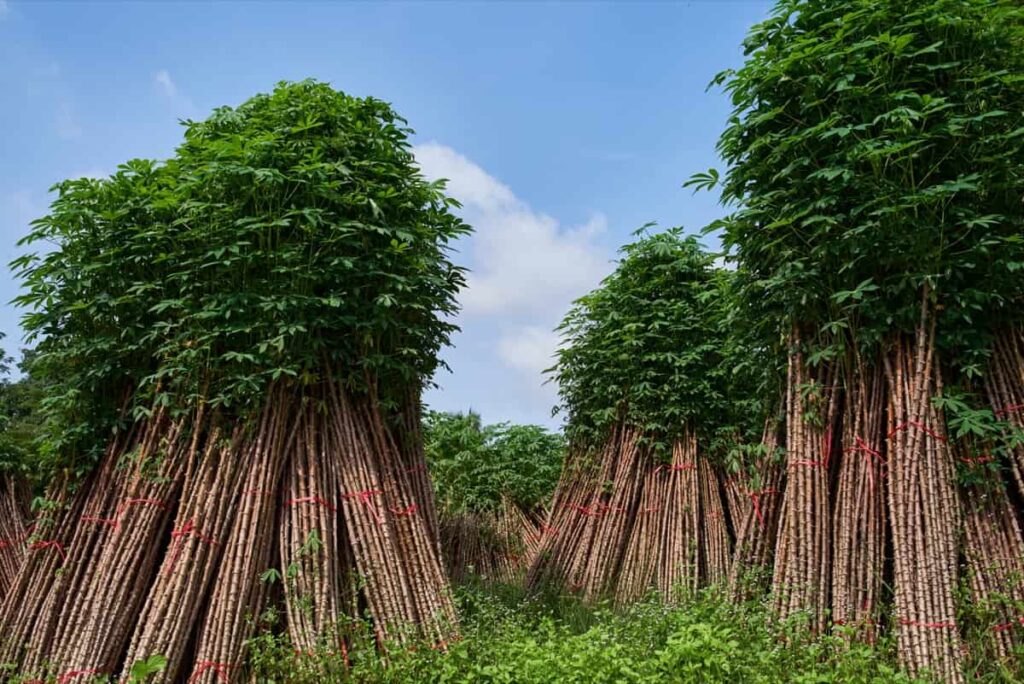
It is essential to comprehend these foes to develop successful solutions for preserving cassava output and ensuring sustainable agricultural practices. In this expert overview, we examine the main pests and diseases affecting cassava, looking at their traits, effects, and potential countermeasures.
Major Pests and Diseases of Cassava
What is Cassava Farming?
Manihot esculenta, also called cassava, is an important crop grown worldwide, particularly in tropical areas. It flourishes on sandy loam soil that is well-drained and has a pH range of 5.5 to 6.5. Cassava is grown from stem cuttings and is normally harvested between 8 and 18 months following germination. Key pests include the green mite and the cassava mealybug, which must be managed properly to prevent Disease and infestation. Harvested roots can be processed into various goods, including flour, chips, and starch, greatly enhancing global food security and generating cash.
Major Pest of Cassava
- Mononychellus tanajoa, also known as the cassava green mite, feeds on cassava leaves, resulting in leaf curling, stippling, and decreased photosynthesis.
- Mealybugs rob the plant of its nutrients, causing nutrient deficiencies that result in wilting, deformed leaves, and decreased crop yields.
- Whiteflies: spread viruses that result in mosaic symptoms, reduced development, and root necrosis in cassava (Bemisia tabaci).
- African virus known as Cassava Mosaic Virus (ACMV) causes yellowing, leaf mosaic, and a drastic reduction in root size, making cassava roots inedible.
- Brown streak virus: Brown streaks on roots are a symptom of the cassava brown streak virus (CBSV), which also compromises the health of the entire plant.
- Nezara viridula, often known as the cassava green stink bug, feeds on the cassava plant’s seeds and pods, lowering the seed’s quality and quantity.
- Cassava Red Mite (Oligonychus gossypii): Red mites cause bronzing and diminished color in leaves.
Major Diseases of Cassava
- Cassava mosaic disease (CMD): CMD results in distinctive mosaic patterns on leaves, limited development, and decreased tuber output. Different begomoviruses bring it on.
- Cassava Brown Streak Disease (CBSD): CBSD results in brown streaks on roots and necrosis, making tubers inedible. Two different viruses bring it on.
- Cassava Bacterial Blight (CBB): CBB results in wilting, leaf necrosis, and diminished root quality. It is brought on by the bacteria Xanthomonas axonopodis.
- Cassava Green Mite (CGM): This pest infestation is caused by the cassava green mite, which destroys leaves and impairs photosynthesis, diminishing tuber yields.
- Cassava anthracnose disease (CAD) is a fungus that infects cassava plants and is brought on by Colletotrichum gloeosporioides. It causes dark, sunken lesions on the leaves and stems that prevent photosynthesis and growth.
In case you missed it: How to Grow Cassava/Yuca from Cuttings and Tubers: A Guide for Planting to Harvesting
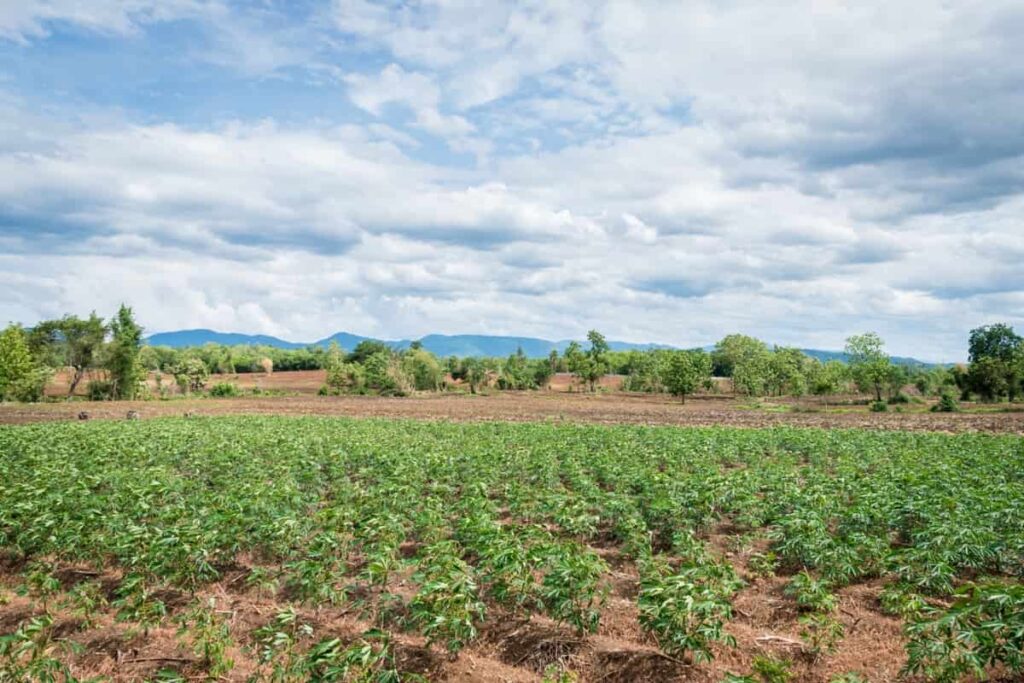
Cassava Mealybug: Identification and Control Measures
The cassava mealybug (Phenacoccus manihoti) is a destructive insect causing substantial cassava crop losses worldwide. Accurate identification is essential for effective control. Mealybugs are small, oval-shaped insects (2-4 mm) with a cottony appearance, found in white masses on cassava leaves, stems, and roots.
Control methods include introducing natural enemies like Epidinocarsis Lopez wasps, using insecticidal soaps and neem oil, planting resistant cassava varieties, and maintaining field hygiene. Early detection and integrated pest management are crucial for protecting cassava crops and ensuring food security, emphasizing the need for regular monitoring and swift intervention.
Cassava Green Mite: Symptoms and Management Strategies
Mononychellus tanajoa, known as the cassava green mite (CGM), is a destructive pest that damages cassava crops worldwide. CGM infestations are characterized by tiny greenish-yellow mites on the underside of cassava leaves, causing stippling, yellowing, and bronzing of leaves, leading to defoliation, reduced photosynthesis, and yield loss.
Effective CGM management involves a combination of cultural, biological, and chemical methods, including introducing natural predators like ladybugs and predatory mites, maintaining field hygiene, reducing nitrogen fertilizer use, and timely leaf removal. Acaricides may be necessary for severe infestations, but their careful use is essential to prevent resistance development and environmental damage. Integrated pest management (IPM) is crucial in sustainable CGM control for healthy cassava yields.
Cassava Bacterial Blight: Prevention and Control
Cassava Bacterial Blight (CBB) is a deadly disease affecting cassava plants, a crucial food crop in tropical areas. To protect cassava production, effective prevention and control measures are needed, including planting CBB-resistant cultivars, maintaining clean, disease-free planting material, crop rotation, bacterial disinfection, chemical control with copper-based bactericides, vector control with insect vectors like whiteflies, and maintaining farm hygiene by keeping fields clean and not planting in wet spots.
Cassava Brown Streak Disease: Detection and Management
Cassava Brown Streak Disease (CBSD) poses a significant threat to Africa’s cassava crop. Food security hinges on swift detection and control measures endorsed by MAAIF. Key strategies include planting disease-free cuttings, utilizing tolerant cultivars like NASE 14, 19, and NAROCAS1 (with updates from Extension workers), and eradicating infected plants through burial or controlled burning.
A holistic disease management approach is essential. While many CMD-resistant varieties remain susceptible to CBSD, NASE 14, 19, and NAROCAS1 are recommended options for growers due to their improved tolerance.
In case you missed it: The 19 Best Garden Sprayers for Your Home Garden, Patio, and Lawn within your Budget
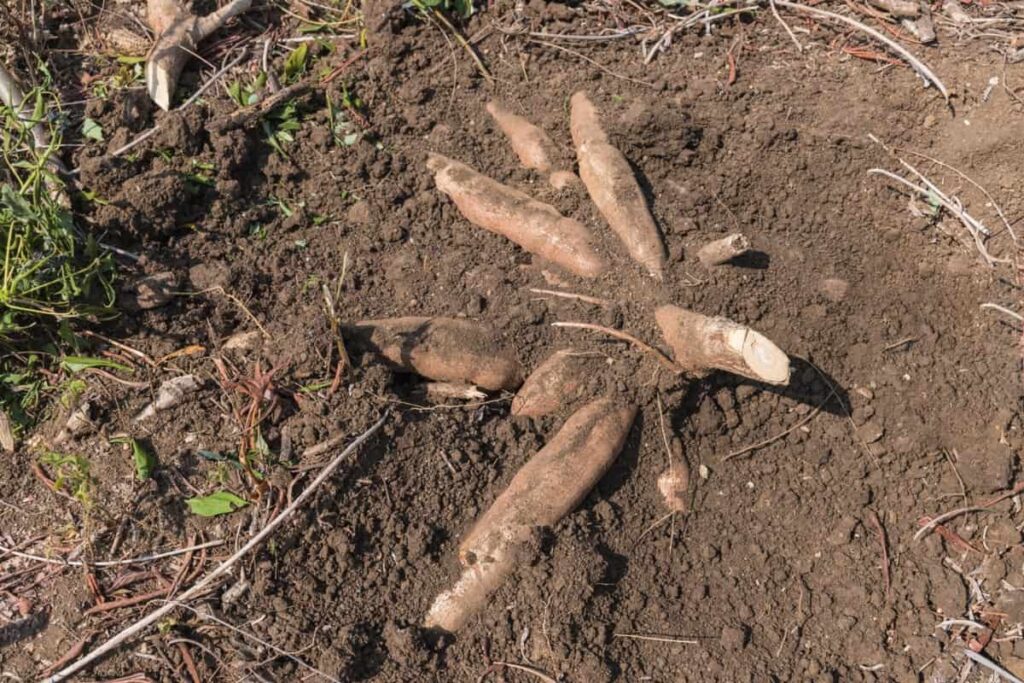
Cassava Mosaic Disease: Understanding and Controlling Spread
Cassava mosaic disease (CMD), a destructive plant disease, is a major threat to tropical crops like cassava. By whiteflies or contaminated cuttings, CMD can cause mosaic patterns, bent leaves, and stunted development, potentially lowering cassava output by up to 80%. To combat CMD, plant-tolerant cultivars like NASE and TME are recommended. Additionally, legumes should be used in crop rotation, and plant material should be free of Disease. Ongoing research and community outreach activities are crucial to mitigate CMD’s impact.
Cassava Anthracnose: Effective Control Methods
Cassava anthracnose, caused by the deadly fungus Colletotrichum gloeosporioides, threatens cassava crops. Effective control strategies include planting resistant cassava varieties, regularly removing diseased plant parts, using fungicides like systemic or copper-based treatments, practicing crop rotation, proper pruning for improved air circulation, employing biological control agents, and implementing quarantine measures to prevent the introduction of infected plant material. These tactics collectively safeguard cassava crops from this destructive pathogen.
Cassava Root Rot: Diagnosis and Treatment Options
Cassava root rot, a fungal disease caused by Phytophthora spp, poses a significant threat to tropical crops, causing brown lesions, wilting, and root discoloration. Diagnosis involves visual signs and laboratory tests like PCR and ELISA. Control measures include crop rotation, better drainage, and adequate plant spacing.
Prophylactic measures like metalaxyl fungicides can be used, while long-term solutions include using good planting material and cultivating disease-resistant cassava cultivars. Integrated management strategies are crucial for reducing cassava root rot and ensuring food security in affected areas.
Cassava Whitefly: Impact and Integrated Pest Management
Bemisia tabaci, a cryptic species within the Bemisia tabaci sensu lato complex, is a major agricultural pest causing low cassava productivity in Africa, particularly Nigeria. Whiteflies suck sap from leaves and transmit plant viruses, causing physical damage and disease vectors like cassava mosaic disease and brown streak disease.
To reduce grasshopper populations, handpick grasshoppers, destroy egg pods, use biopesticides like “Green Muscle” in South and West Africa, and use neem-containing products. Integrated Pest Management (IPM) techniques, including cultural practices, biological management, and selective insecticide application, are essential for preventing cassava whitefly infestations.
Cassava Red Spider Mite: Prevention and Control Measures
The Cassava Red Spider Mite is a significant pest that harms cassava plants, a crucial food source. To control infestations, water plants vigorously, treat them with insecticidal soap, avoid chemical pesticides, isolate sick plants, choose resistant varieties, and use pheromone traps and weather data for precise control measures. It is essential to avoid mite populations by watering plants, treating plants with insecticidal soap, and using resistant varieties to prevent their spread.
Cassava Witches’ Broom Disease: Control Strategies
Cassava plants, a crucial food crop in tropical countries, are vulnerable to cassava witches’ broom disease (CWBD). To control CWBD, several strategies have been developed, including creating and spreading CWBD-resistant cultivars, controlling whitefly vectors with pesticides or biological means, and early detection of infected plants through routine field surveys and diagnostic testing. These methods aim to minimize the spread of the Disease and reduce its economic impact. The goal is to remove and kill infected plants to prevent their spread swiftly.
In case you missed it: 20 Best Plant Nurseries in Manila: Wholesale Garden Centers for Flowers, Fruits, Indoor, and Outdoor Plants
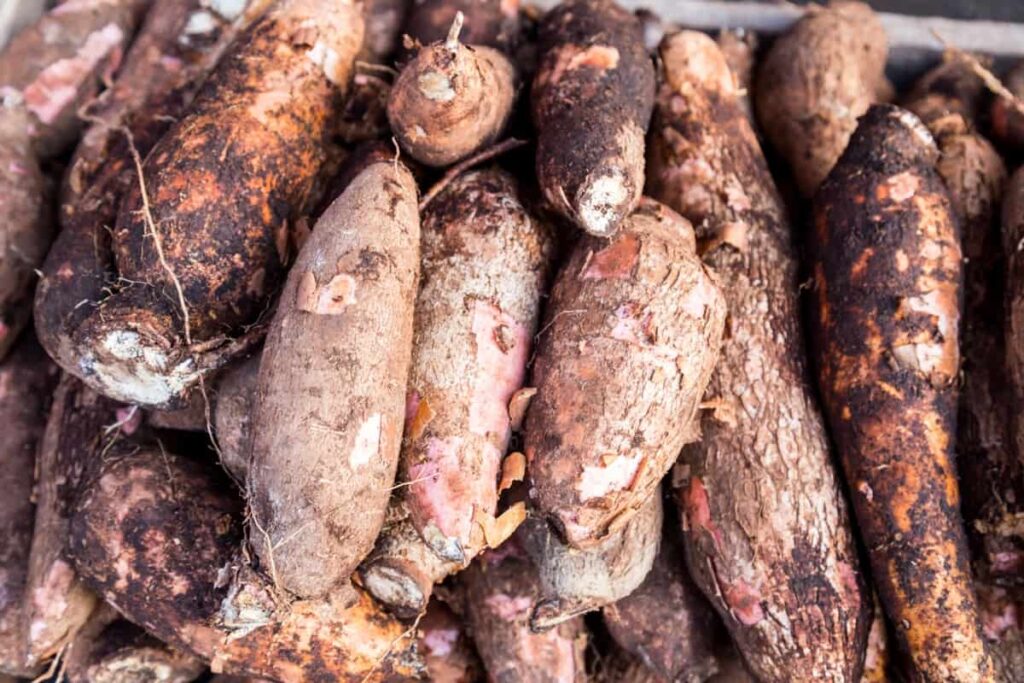
Cassava Rust Disease: Symptoms and Control Measures
Phakopsora meibomian and Phakopsora Manihot, fungi responsible for cassava rust disease, pose a significant threat to cassava production worldwide. Symptoms include rust-colored pustules and orange-to-brown spore masses on leaves, leading to defoliation, decreased photosynthesis, and stunted development.
Control measures include planting disease-resistant cultivars, routinely searching for sick plants, and using fungicides like copper-based solutions. Improving cultural norms, such as proper spacing and healthy eating, and promoting farmer education and disease-resistant breeding initiatives are also crucial for long-term success.
Cassava Stem Borers: Prevention and Management Techniques
Cassava stem borers threaten cassava production, particularly the African Cassava Mosaic Virus (ACMV) and Cassava Green Mite (CGM). To control these pests, methods include planting resistant cassava types, intercropping with other pest-repellent plants, regular weed removal, biological control by introducing natural predators like nematodes, chemical control using pesticides, and maintaining proper soil fertility for pest-resistant cassava plants. Proper nutrition also plays a major role in preventing infestations and ensuring the crop’s sustainability.
Cassava Root Knot Nematodes: Effective Control Approaches
Meloidogyne spp., also known as cassava Root Knot Nematodes, are destructive parasites that reduce global cassava yields. Control methods include planting nematode-resistant varieties, rotating crops, using biocontrol methods like nematodes, fungi, or bacteria, compost and organic amendments, chemical nematicides in severe infestations, and soil solarization. These methods help suppress nematode populations, strengthen soil, and prevent further infestations. However, caution should be exercised when using chemical nematicides.
Cassava Leaf Miner: Identification and Integrated Pest Management
Cassava plants, a crucial food source in tropical climates, are harmed by the cassava leaf miner (CLM), small, yellowish-white maggots with blackheads that feed inside leaves and form serpentine tunnels. IPM techniques, including cultural strategies, chemical solutions, and biological management, provide efficient CLM management. Regular monitoring and early identification are crucial to reduce CLM damage, and promoting CLM-resistant cultivars is essential for sustained pest control and food security for disadvantaged groups.
Cassava Bacterial Wilt: Diagnosis and Control Methods
Cassava plants, a common food crop in tropical areas, are susceptible to cassava bacterial wilt (CBW), which can be diagnosed visually or through laboratory testing. Control techniques include disease-free planting material and crop rotation, while chemical control is limited. Copper-based sprays can be useful, and breeding-resistant cassava cultivars are a long-term solution. Monitoring and early identification are crucial components of integrated pest management for CBW control. Farmers should also follow proper cleanliness procedures to prevent disease spread.
In case you missed it: Green Mussel Farming in the Philippines: A Comprehensive Guide

Cassava Scale Insects: Impact and Management Practices
Cassava Scale Insects, notably the mealybug species (Phenacoccus manihoti and P. herreni), are a major threat to global cassava (Manihot esculenta) production. These tiny pests hinder cassava growth, reduce yields, and can even kill plants, posing a substantial risk to food security and livelihoods in tropical regions where cassava is a staple.
Effective management involves biological control with the parasitic wasp Epidinocarsis Lopez, regular monitoring, early detection, systemic insecticides, and cultivating resistant cassava varieties. Implementing integrated pest management strategies is essential to combat the devastating impact of these insects on this vital crop.
Cassava Fusarium Wilt: Understanding and Controlling Spread
The destructive Disease Fusarium oxysporum f. sp. manihotis (FOM), which affects the cassava plant (Manihot esculenta), is called Cassava Fusarium Wilt. The plant’s vascular system becomes infected by FOM, which causes wilting, reduced growth, and, finally, plant death. Accurate diagnosis of diseased plants and adopting resistant cultivars are crucial for limiting their spread.
Mitigation techniques include crop rotation, cleaning the soil, and avoiding polluted planting material. Researchers are investigating fungicides and biological controls as management tools. To protect cassava, an important crop for food security in many tropical countries, educating farmers on disease signs and preventative measures is essential.
Integrated Pest and Disease Management for Cassava Cultivation
Integrated pest and disease management (IPDM) is crucial for cassava cultivation to reduce chemical inputs and minimize insect and disease damage. It involves cultural practices like intercropping, crop rotation, correct planting methods, biological control by introducing beneficial predators, and growing resistant cassava types.
Chemical control involves using pesticides with strict application criteria, consistent monitoring, early detection to prevent problems, and education of farmers on IPDM principles and techniques for efficient implementation. This approach ensures sustained crop production and minimizes insect and disease damage.
In case you missed it: The Carolina Reaper Pepper: Planting Seeds, Growing, and Care for Scorching Heat of the World’s Hottest Chili
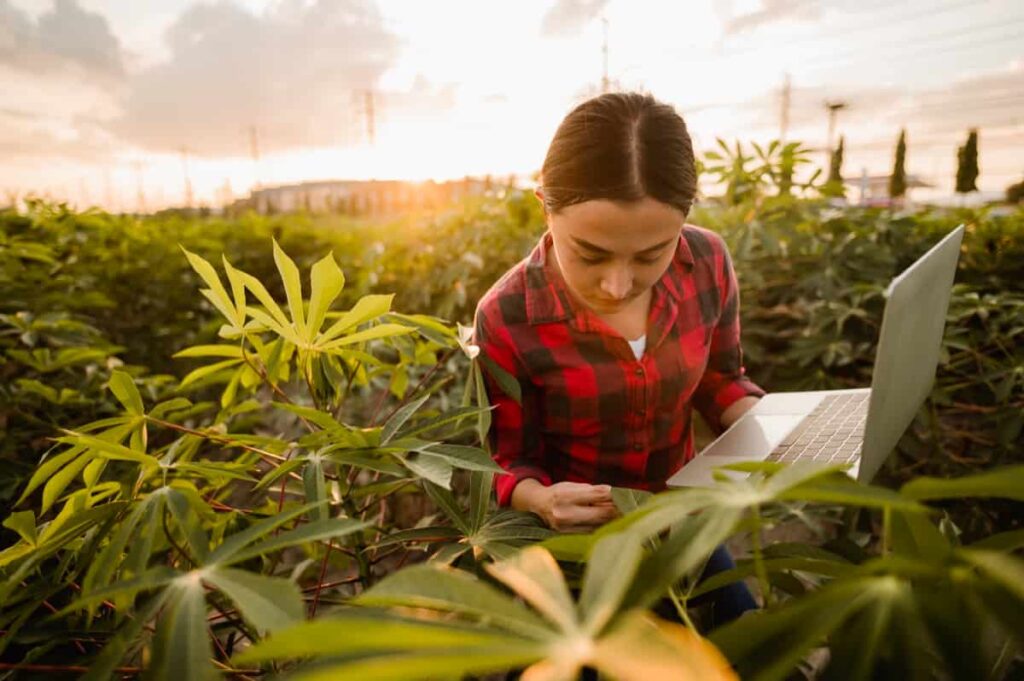
Conclusion
Effective preventative and control measures are essential to reduce the impact of the main pests and diseases affecting cassava. Key tactics include integrated pest control, early identification, resistant crops, and sound agricultural practices. Farmers, researchers, and politicians must work together to maintain cassava production and food security.
- Budget Friendly Sheep Shed Ideas: Cheap and Low-Cost Tips
- How Much Do Cattle Farmers Make: Revenue Streams in Cattle Farming
- Management Pests and Diseases in Your Cotton Field
- Sheep Farming Business Plan for Beginners
- Aquaponic Farming at Home: A Step-By-Step Guide
- Profitable Village Farming Business Ideas in 2024
- High-Yield Aquaculture: Fast-Growing Fish for Farming
- Effective Fish Pond Construction Techniques for Beginners
- Irrigation and Water Management in Pineapple Farming
- Blossom to Harvest: Mastering Flowering and Pollination in Papaya Farming
- Pig Fattening Essentials: From Selection to Sale for Beginners
- Raising Wagyu Cattle: A Complete Guide for Premium Beef Production
- Soil Types and Their Water Holding Capacity
- Optimizing Irrigation Schedules for Coconut Groves for Enhanced Yield
- Espresso Your Garden: Coffee Grounds for Healthier Acid-Loving Plants
- The Best Soil Mix for Snake Plants: How to Mix Your Own Snake Plant Soil
- Green Thumb Success: Expert Tips for Cultivating Greenhouse Beans All Year Round
- Bloom All Year Round: The Ultimate Guide to Indoor Hyacinth Care
- Eco-Friendly Gardening: How to Make Liquid Fertilizer from Kitchen Waste
- Ultimate Guide to Grow Anise in Pots: Explore Seed Propagation to Harvesting
- Guide to Raising Chester White Pigs: Discover Breed Facts to Growth Management
- Mastering the Elegance: The Ultimate Guide to Weeping Cherry Tree Care, Planting, and Maintenance
- Ultimate Guide to Planting Garlic in Grow Bags: Growing Strategies for Beginners
- How to Fix Spider Plant Leaf-Related Problems: Natural and Organic Remedies
- 10 Reasons Why Your Tulsi Plant is Shedding Leaves: Home Remedies and Solutions
- Optimizing Growth and Yield: The Advantages of Palm Bunch Ash Fertilizer
- Utilizing Neem Oil Extract as a Natural Pesticide for Hydrangea
- From Soil to Harvest: Various Ways in Which Farmers Can Use AI Tools
- Steps to Encourage and Induce Citrus Flowers: A Comprehensive Guide
- How to Fix Snake Plant Leaf-Related Issues: Natural and Organic Remedies
- Transform Your Garden into a Fragrant Oasis with Raat Ki Rani (Night Blooming Jasmine)
- Discover the Ideal Chicken Breeds for Philippine Farms
- How to Create a Poultry Egg Farm Business Plan for Profits
- Grow Lemon Cucumbers Like a Pro: Insider Techniques for Bountiful Yields
- Ultimate Guide to Caring for Your Pink Princess Philodendron: Tips for Thriving Variegation
- Areca Nut Profit Per Acre: Calculating Yield and Cost of Cultivation
